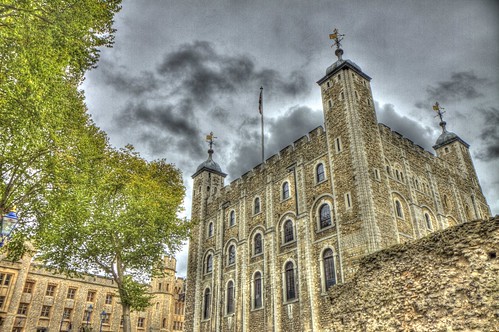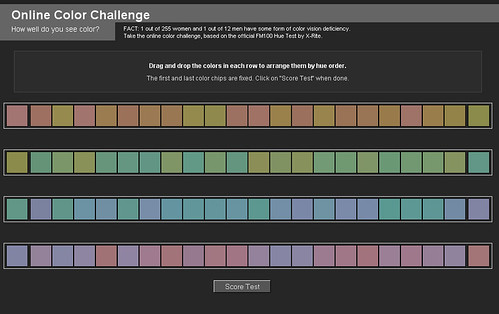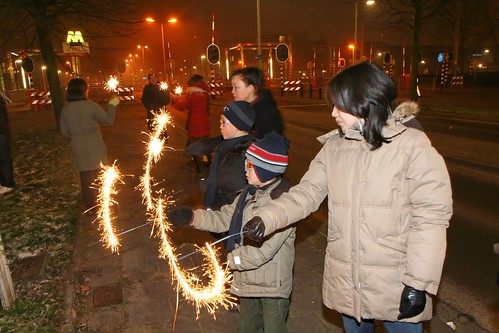
White Tower @ Tower of London. Another experiment with Photomatix Pro.

Have you ever asked yourself how many times you have activated the shutter on your Canon DSLR? If you have a DIGIC III/IV DSLR (except the 1D* series) you can use the utility EOSInfo (Windows and Mac version available) to retrieve the shutter count. This utility does not work on a D*, 5D, 10D, 20D, 30D, 300D, 350D, or 400D body.
Ter gelegenheid van 'De Maand van de Fotografie' organiseert de Avro een fotowedstrijd. Maak een mooie foto van jouw stad en laat zien waarom jouw stad een kunstige plek is. Let daarbij op compositie, lichtval en originaliteit. Klik hier voor meer informatie.
I will be visiting Dubai and I am wondering what sights will be left to see. First the observation deck of the Burj Khalifa (the tallest building in the world) closes. See my blog post here. There is no indication when it will be reopened.
Now the aquarium in the Dubai Mall (largest mall in Dubai) has developed a leak. The video shows people walking in the mall in ankle deep water. The aquarium holds 10 million liters of water. I hope they fix it before the aquarium runs dry.
In the Canon 50D the auto exposure bracketing and exposure compensation have been combined. Instead of the usual –x, 0, +x exposures (where x is between 0 and 2) you can offset the exposures so it is possible to shoot different combinations like +4, +2 and 0.
When combined with high speed continuous shooting you can take a lot of different exposures in a short time which are handy for HDR photography. Jeff Lynch has written a blog post on how to use this creatively.
My photo class visited the Alexander Rodchenko exposition at Foam. Rodchenko started as a painter and graphic designer. Because he was convinced that photography was the future, he started to take photographs.
I was impressed by his photo montages of his early days. Rodchenko cut out pieces of people or artifacts and put them together to form a new picture. Later, he used unusual perspectives to break free from the usual photos made from the waist level. In 1928 Rodchenko stopped painting and bought a Leica. This small camera enabled him to experiment with unusual viewpoints. Lines going diagonal through the frame play an important role in his photos.

Trey Ratcliff is well known for his web site StuckInCustoms.com where he explains about all aspects of HDR photography. Trey shot the first HDR photo which was displayed at the Smithsonian Institute. He gave a talk at the Googleplex for the Authors@Google program. Read more about it here.
I found a more recent Dutch television program about Char and her usage of 'cold reading'. James Randi was even asked to comment ! The program is in Dutch, with parts in English with Dutch subtitles. Click on the link below to see it:
De trucs van Char, het medium - 23 maart 2008: ZEMBLA
Some English sections:
Interview with James Randi about mediums
Randi watches Char and explains what her tricks are
Canon has an entire web site named ‘Flash Work’ which explains the various possibilities of automatic and manual flash exposure. The most interesting functions are:
The Canon Flash Masterclass web site is more up to date and contains videos which explain the functions even better. See also my previous blog post ‘Flash Technique’.

Copyright © Clayton Bozard
Clayton Bozard was mentioned by our teacher on the photo course as someone who does special things with flash.
It turns out Clayton publishes his work in several ways. He has a blog, a web site, and he even has a Facebook page.
I am curious to see if I can obtain the same effect with small flashes, because Clayton uses some serious lighting to obtain a large and powerful light source:
A wonderful talk by Sir Ken Robinson about creativity and how Gillian Lynne found out what her talent was.
I rented the Canon EF 70-200mm f/2.8 L IS USM Lens for a day at the Artis Zoo, Amsterdam. It is really good glass. The wide aperture of f2.8 really challenges your focusing abilities.
It was rather cold that day so not too much animals could be seen. At least the snow owl didn't mind the weather.
I found this little handy gadget. When carrying multiple small lenses (for example Canon 85 mm f1.8 and Canon 50mm f1.8) you have two cylinders clanking around in your bag. Using a double cap you can create one long tube which might be easier to store in your bag.
Using a double cap on a single lens is also handy when changing lenses. Just remove the lens from the camera and apply it to the open end of the double cap. When you screw on the double cap, the other lens will be released. Then use the other lens and put in on the camera.
These double caps are made by Op/Tech USA.
The Burj Khalifa Observation Deck on the highest building in the world closed unexpectedly. The reason is unclear. I hope it reopens before we visit Dubai. Until then I have to do with this video. Make sure you buy your tickets in advance, because they are more expensive when you purchase them at the tower.
Neil van Niekerk has written a very informative blog entry about balancing flash and ambient exposure. Make sure to read it!
I use the method of under exposing the background by one or two stops. This is done in M(anual) mode. The foreground or subject is then lit with the flash in TTL mode. Adjustment of the flash exposure is done with flash compensation.
Sky from Philip Bloom on Vimeo.
We will be visiting Dubai soon. Photographer / film maker Philip Bloom made this time lapse of Dubai in about five days and nights. I hope to see some interesting sights!Canon USA has an entire section on flash photography with Speedlites. Very interesting articles can be found here. For example go retro and learn how to take flash photos with the external automatic flash exposure sensor on the Speedlite 580 EX II. Just like my old Braun flash!